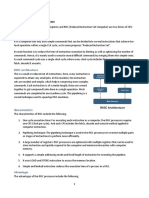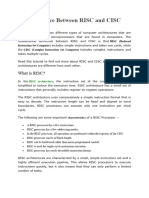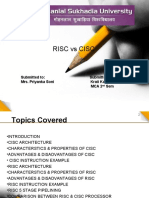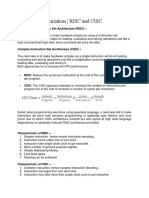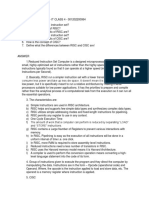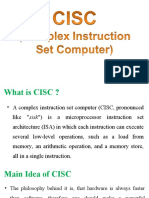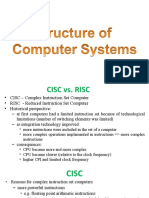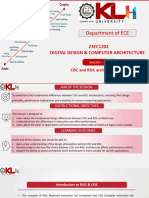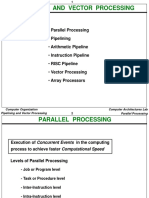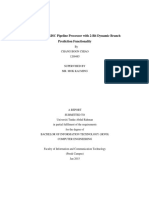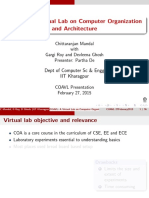0% found this document useful (0 votes)
105 views5 pagesRISC and CISC in Computer Organization
The document discusses the differences between Reduced Instruction Set Architecture (RISC) and Complex Instruction Set Architecture (CISC) in computer organization, highlighting their characteristics, advantages, and disadvantages. RISC focuses on simplifying hardware with fewer, simpler instructions for faster execution and lower power consumption, while CISC uses complex instructions that perform multiple operations but can lead to slower execution and higher power usage. The document also compares CPU performance, memory usage, and provides examples of how operations are handled in both architectures.
Uploaded by
ezekiel nyamuCopyright
© © All Rights Reserved
We take content rights seriously. If you suspect this is your content, claim it here.
Available Formats
Download as DOCX, PDF, TXT or read online on Scribd
0% found this document useful (0 votes)
105 views5 pagesRISC and CISC in Computer Organization
The document discusses the differences between Reduced Instruction Set Architecture (RISC) and Complex Instruction Set Architecture (CISC) in computer organization, highlighting their characteristics, advantages, and disadvantages. RISC focuses on simplifying hardware with fewer, simpler instructions for faster execution and lower power consumption, while CISC uses complex instructions that perform multiple operations but can lead to slower execution and higher power usage. The document also compares CPU performance, memory usage, and provides examples of how operations are handled in both architectures.
Uploaded by
ezekiel nyamuCopyright
© © All Rights Reserved
We take content rights seriously. If you suspect this is your content, claim it here.
Available Formats
Download as DOCX, PDF, TXT or read online on Scribd
/ 5







